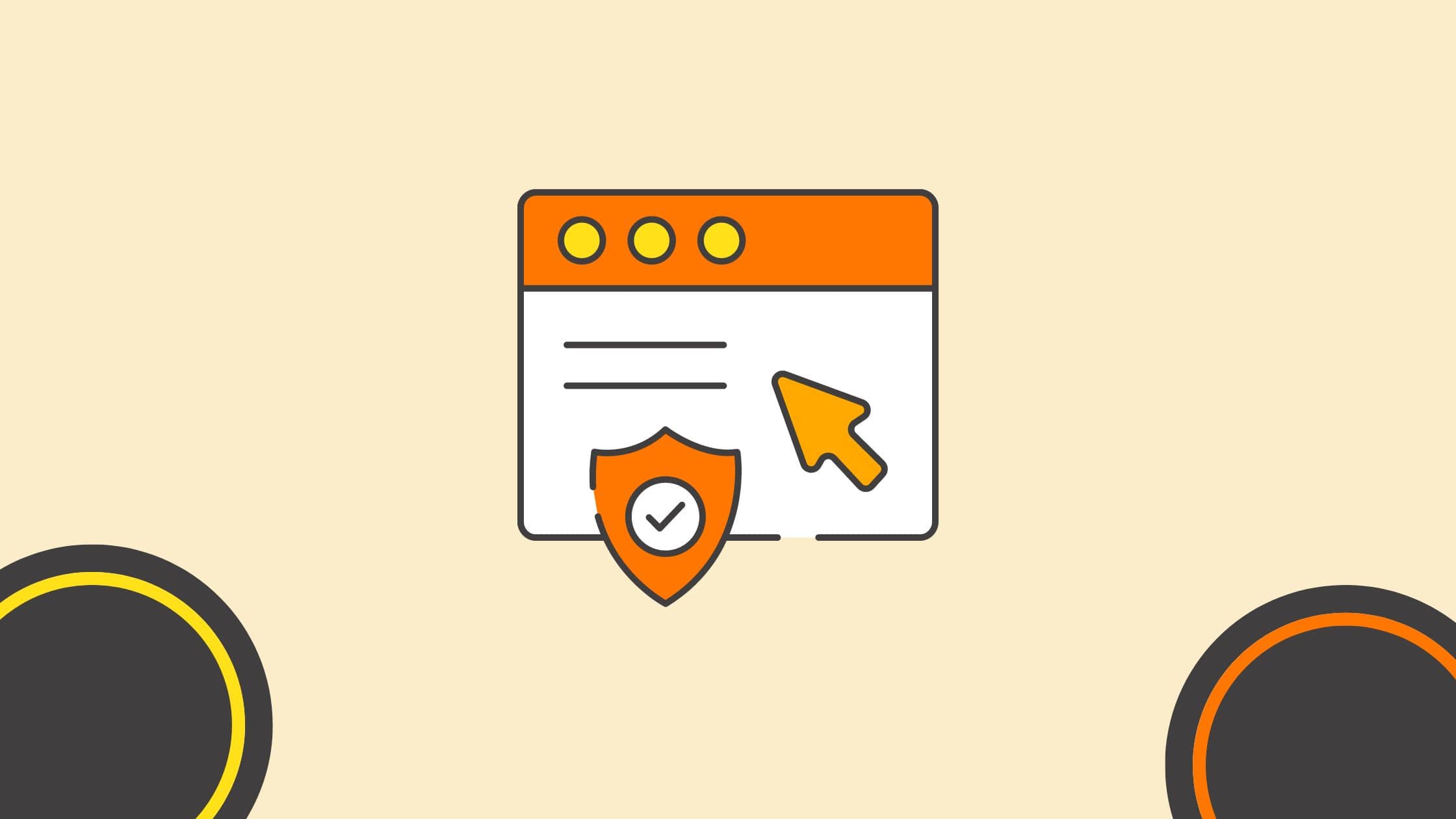Building a Fortress of Trust: Securing Your Ecommerce Website for Client Retention
In the digital age, trust is the currency of e-commerce.
Customers entrust you with their personal information and hard-earned money, expecting a seamless and secure shopping experience. Any breach of that trust can have devastating consequences, leading to lost sales, reputational damage, and even legal ramifications.
But building a secure e-commerce website isn’t just about ticking boxes. It’s a continuous process of implementing best practices, monitoring vulnerabilities, and staying ahead of evolving threats.
This article will delve into the essential steps you can take to secure your e-commerce website and foster lasting client loyalty.
Chapters
- The Bedrock of Security: Laying the Foundation
- Fortifying the Walls: Implementing Proactive Measures
- Dark Web Scan: Shining a Light on the Shadows
- Beyond the Walls: Building Trust and Loyalty
- How AI Can Help Secure Your E-Commerce Website
- AI and Malware Detection
- Protecting Your Customers’ Data
- The AI Advantage: Speed and Scale
- Implementing AI: Where to Start
- Conclusion: Security is an Ongoing Journey
- FAQ
The Bedrock of Security: Laying the Foundation

- Secure your infrastructure: Choose a reliable web hosting provider with a proven track record of security. Ensure they employ industry-standard security measures like firewalls, intrusion detection systems (IDS), and DDoS protection.
- Solidify your coding: Use secure coding practices and regularly update your website plugins and software. Outdated software can be riddled with vulnerabilities, making it a prime target for attackers.
- Encrypt all data: Implement Transport Layer Security (TLS) encryption on your website to protect data in transit between your server and your customers’ browsers. This ensures sensitive information like credit card details and login credentials remain unreadable even if intercepted. No DMARC record found errors can expose your domain to phishing attacks. Ensure your domain’s DNS is configured with a DMARC record to strengthen email security.
- Strengthen your passwords: Enforce strong password policies for both customers and employees. Promote the use of unique, complex passwords and encourage regular password changes. Consider multi-factor authentication (MFA) for added protection.
Fortifying the Walls: Implementing Proactive Measures
- Regular vulnerability scans: Don’t wait for a breach to discover vulnerabilities. Conduct regular penetration testing and vulnerability scans to identify and patch any weaknesses in your website’s security.
- Web application firewalls (WAFs): Deploy a WAF to act as a security shield, filtering out malicious traffic and protecting your website from common web application attacks like SQL injection and cross-site scripting (XSS).
- Data security solutions: Invest in data loss prevention (DLP) and data encryption solutions to protect sensitive customer information stored on your servers. Encryption ensures that even if data is breached, it remains unreadable to unauthorized individuals.
- Dark web monitoring: Stepping into the shadows, dark web monitoring services can scan underground marketplaces and forums for your stolen data. This proactive approach allows you to take swift action if your customer information is compromised.
Dark Web Scan: Shining a Light on the Shadows
The dark web, a hidden network of websites accessible only through specialized software, is a haven for cybercriminals. They trade stolen data, including credit card details, login credentials, and personal information. Dark web monitoring can shed light on these dark corners, scanning forums and marketplaces for your data. If your information is found, you’ll be alerted immediately, allowing you to:
- Warn affected customers: Promptly inform impacted customers about the breach and advise them to change their passwords and monitor their accounts for suspicious activity.
- Take mitigation measures: Quickly deactivate compromised accounts and implement stricter security measures to prevent further breaches.
- Protect your brand reputation: A proactive response to a data breach can help minimize reputational damage and demonstrate your commitment to customer security.
Beyond the Walls: Building Trust and Loyalty

Security is just one piece of the puzzle. Building client retention requires fostering a culture of trust and transparency. Here are some additional tips:
- Be transparent about your security practices: Clearly communicate your security measures and data privacy policies to your customers. By using consent management software, this demonstrates your commitment to protecting their information.
- Provide a secure checkout process: Make sure your checkout process is secure and easy to navigate. Offer multiple payment options and ensure PCI compliance to handle credit card data safely.
- Invest in customer support: Responsive and helpful customer support is crucial for building trust and resolving any security concerns your customers may have.
- Regularly educate your customers: Educate your customers about online security best practices and phishing scams. This empowers them to protect themselves and stay vigilant.

How AI Can Help Secure Your E-Commerce Website
E-commerce is booming, and with it comes an increased risk of cyber threats. Hackers target online stores for a simple reason: valuable data. From customer credit card details to personal information, your e-commerce site is a treasure trove for cybercriminals. But here’s the good news—AI is stepping up to the plate as your cybersecurity MVP (Most Valuable Protector).
In this article, we’ll dive into how AI can safeguard your e-commerce website, keep your customers safe, and give you some peace of mind.
Why E-Commerce Websites Are Prime Targets
Before exploring how AI can help, let’s understand why e-commerce websites are often targeted. The main reasons include:
- High Value of Data: Customer information and payment details are hot commodities.
- Constant Transactions: Continuous activity makes it easier for hackers to slip under the radar.
- Diverse Attack Vectors: From phishing to SQL injections, there’s no shortage of tricks hackers use.
Given these threats, the traditional “lock and key” approach to security isn’t enough anymore. That’s where AI comes in.
AI: The New Bodyguard for Your Website
Artificial Intelligence doesn’t sleep, doesn’t take coffee breaks, and never forgets to check for vulnerabilities. Here’s how it can protect your e-commerce site.
1. Detecting Anomalies in Real-Time
AI-powered systems analyze website activity 24/7. They’re experts at spotting unusual behavior, like multiple failed login attempts or unexpected file changes. These anomalies often signal an attack, and AI can flag them before they escalate.
For instance, if a hacker tries to log in using stolen credentials, AI can recognize the unusual activity and block access instantly. This proactive monitoring can save your website from serious breaches.
2. Stopping Fraud Before It Happens
Fraud detection is a game of patterns, and AI excels at recognizing them. By analyzing purchase behavior, location, and payment methods, AI can identify suspicious transactions. For example, if a user with a history of small purchases suddenly buys ten luxury items from an unfamiliar IP address, AI raises a red flag.
Not only does this safeguard your revenue, but it also protects your customers from fraudulent activities.
3. Strengthening Login Security
Gone are the days of relying solely on passwords. AI enables advanced authentication techniques like facial recognition, fingerprint scanning, and behavioral analysis. These methods are harder for attackers to crack and provide a smoother experience for legitimate users.
Additionally, AI can continuously learn and adapt to recognize emerging threats, ensuring your security measures stay ahead of the game.
AI and Malware Detection
Malware is a silent killer for e-commerce websites. It can steal data, compromise performance, and ruin your reputation. AI tools can scan your site for malware far more effectively than manual checks. They not only detect existing threats but also predict vulnerabilities that hackers might exploit in the future.
Think of it as having a crystal ball for cybersecurity—only it’s powered by machine learning, not magic.
Protecting Your Customers’ Data
Customer trust is the cornerstone of any successful e-commerce business. A data breach can erode that trust faster than you can say “cybersecurity.” AI encrypts sensitive information, ensuring it’s unreadable even if intercepted. Plus, it monitors how data flows through your site, spotting leaks before they become disasters.
The AI Advantage: Speed and Scale
One of AI’s biggest strengths is its ability to work at scale. As your e-commerce site grows, manual security checks become impractical. AI can handle vast amounts of data and traffic effortlessly, making it the perfect partner for scaling businesses.
Moreover, its speed is unmatched. While human teams might take hours—or even days—to respond to a security threat, AI can react in seconds. When it comes to cybersecurity, every second counts.
Implementing AI: Where to Start
Ready to bring AI into your e-commerce security strategy? Here are a few tips:
- Use AI-Powered Security Tools: Platforms like Cloudflare, Darktrace, and Symantec offer AI-driven solutions for threat detection and prevention.
- Invest in AI-Based Fraud Detection: Many payment gateways now come with built-in AI tools for monitoring transactions.
- Work with Experts: Consider hiring a cybersecurity specialist to help integrate AI solutions seamlessly.
Remember, AI isn’t a “set it and forget it” tool. It works best when paired with human oversight and regular updates.
AI is transforming e-commerce security from a reactive game to a proactive one. It doesn’t just respond to threats; it anticipates and prevents them. By incorporating AI into your website’s defense strategy, you’re not just protecting your business—you’re also creating a safer experience for your customers.
In a world where cyber threats are evolving daily, AI might just be your e-commerce site’s best ally. Don’t wait for a wake-up call. Strengthen your defenses today and keep your online store a safe place for everyone.
Conclusion: Security is an Ongoing Journey
Securing your e-commerce website is not a one-time feat but an ongoing journey. By implementing the measures outlined above, including utilizing dark web monitoring, you can build a fortress of trust and safeguard your customers’ information. Remember, building client retention is a marathon, and security is the sturdy track that keeps you on the path to success. Invest in your website’s security, and watch your customers return for more, confident in the knowledge that their trust is your most valuable asset.
FAQ
What is a secure e-commerce website?
A secure e-commerce website employs various security measures to protect customer information, transactions, and the website’s integrity from cyber threats.
Why is security important for e-commerce websites?
Security is crucial to protect sensitive customer data, such as credit card information, prevent fraud, maintain customer trust, and comply with legal and regulatory requirements.
What are the key components of a secure e-commerce website?
Key components include SSL certificates, secure payment gateways, data encryption, regular security audits, strong user authentication, and up-to-date software.
What is SSL, and why is it important for e-commerce?
SSL (Secure Sockets Layer) is a technology that encrypts data transmitted between the user’s browser and the website, ensuring that sensitive information remains private and secure. It’s essential for protecting customer data during transactions.
How can I tell if an e-commerce website is secure?
Indicators of a secure website include a URL that starts with “https,” a padlock icon in the browser’s address bar, and trust seals from reputable security organizations.
What are secure payment gateways, and why are they important?
Secure payment gateways process online transactions securely by encrypting payment information, preventing unauthorized access, and ensuring that customer data is protected throughout the transaction process.
How does data encryption protect e-commerce websites?
Data encryption transforms sensitive information into unreadable code, ensuring that even if data is intercepted, it cannot be understood or misused by unauthorized parties.
What role do firewalls play in securing e-commerce websites?
Firewalls act as a barrier between the website and potential threats from the internet, monitoring and controlling incoming and outgoing traffic to block malicious activity.
How can multi-factor authentication enhance e-commerce security?
Multi-factor authentication (MFA) adds an extra layer of security by requiring users to provide two or more verification factors (e.g., password and SMS code) to access their accounts, reducing the risk of unauthorized access.
What are common e-commerce security threats?
Common threats include phishing attacks, malware, SQL injection, cross-site scripting (XSS), and brute force attacks. These can compromise customer data and website functionality.
How can regular security audits improve e-commerce website security?
Regular security audits identify vulnerabilities and weaknesses in the website’s security infrastructure, allowing for timely updates and improvements to prevent potential breaches.
Why is it important to keep e-commerce software up to date?
Keeping software up to date ensures that the latest security patches and improvements are applied, protecting the website from known vulnerabilities and exploits.
What is PCI DSS compliance, and why is it important for e-commerce?
PCI DSS (Payment Card Industry Data Security Standard) compliance is a set of security standards designed to protect cardholder data. Compliance is mandatory for businesses that handle credit card transactions, ensuring the secure processing, storage, and transmission of payment information.
How can e-commerce websites protect against DDoS attacks?
Protection against DDoS (Distributed Denial of Service) attacks involves using security solutions like DDoS mitigation services, firewalls, and content delivery networks (CDNs) to absorb and deflect malicious traffic.
What are trust seals, and how do they enhance e-commerce security?
Trust seals are badges displayed on websites that indicate the site has been verified as secure by a third-party security organization. They help build customer trust and confidence in the website’s security measures.
How can secure coding practices benefit e-commerce websites?
Secure coding practices involve writing code that is free from vulnerabilities and follows best security practices, reducing the risk of exploitation and enhancing the overall security of the website.
What should customers do to ensure their security while shopping online?
Customers should look for secure websites (https and padlock icon), use strong and unique passwords, enable multi-factor authentication, avoid public Wi-Fi for transactions, and regularly monitor their financial statements for unauthorized activity.
How can e-commerce websites ensure secure data storage?
Secure data storage involves using encryption, access controls, regular backups, and secure servers to protect sensitive information from unauthorized access and breaches.
What is the role of security plugins in e-commerce websites?
Security plugins provide additional security features such as malware scanning, firewall protection, brute force attack prevention, and real-time monitoring to enhance the website’s security.
How can businesses stay updated on the latest e-commerce security trends?
Businesses can stay updated by following industry blogs, participating in security forums, attending cybersecurity conferences, subscribing to security newsletters, and regularly consulting with cybersecurity professionals.
Author Bio
 I’m Erika Balla, a Hungarian from Romania with a passion for both graphic design and content writing. Following the completion of my studies in graphic design, I discovered a second passion in content writing, particularly in crafting well-researched, technical articles. I derive joy from dedicating hours to reading magazines and collecting materials that inspire the creation of my articles. What sets me apart is my love for precision and aesthetics. I am committed to delivering high-quality content that not only educates but also engages readers with its visual appeal. I bring a unique perspective to my writing, actively immersing myself in this field to produce articles that illuminate complex concepts and present them in a clear and accessible manner.
I’m Erika Balla, a Hungarian from Romania with a passion for both graphic design and content writing. Following the completion of my studies in graphic design, I discovered a second passion in content writing, particularly in crafting well-researched, technical articles. I derive joy from dedicating hours to reading magazines and collecting materials that inspire the creation of my articles. What sets me apart is my love for precision and aesthetics. I am committed to delivering high-quality content that not only educates but also engages readers with its visual appeal. I bring a unique perspective to my writing, actively immersing myself in this field to produce articles that illuminate complex concepts and present them in a clear and accessible manner.
Interesting articles
- Demystifying Google’s Core Web Vitals: A Guide to SEO Success
- AI-Powered Content Creation: Tools and Techniques for Marketers
- 5 ways of using AI to Improve your Marketing Efforts
- The Importance of Branding in Digital Content Creation
- How to Write Press Releases for Optimal Results
- Revitalize Your Blog: Fresh Content Ideas to Engage Your Audience and Generate Leads
- The Psychology Behind Choosing The Right Color For Your App Designing
- Avoid Data Loss in Google Workspace: A Comprehensive Guide
Master the Art of Video Marketing
AI-Powered Tools to Ideate, Optimize, and Amplify!
- Spark Creativity: Unleash the most effective video ideas, scripts, and engaging hooks with our AI Generators.
- Optimize Instantly: Elevate your YouTube presence by optimizing video Titles, Descriptions, and Tags in seconds.
- Amplify Your Reach: Effortlessly craft social media, email, and ad copy to maximize your video’s impact.